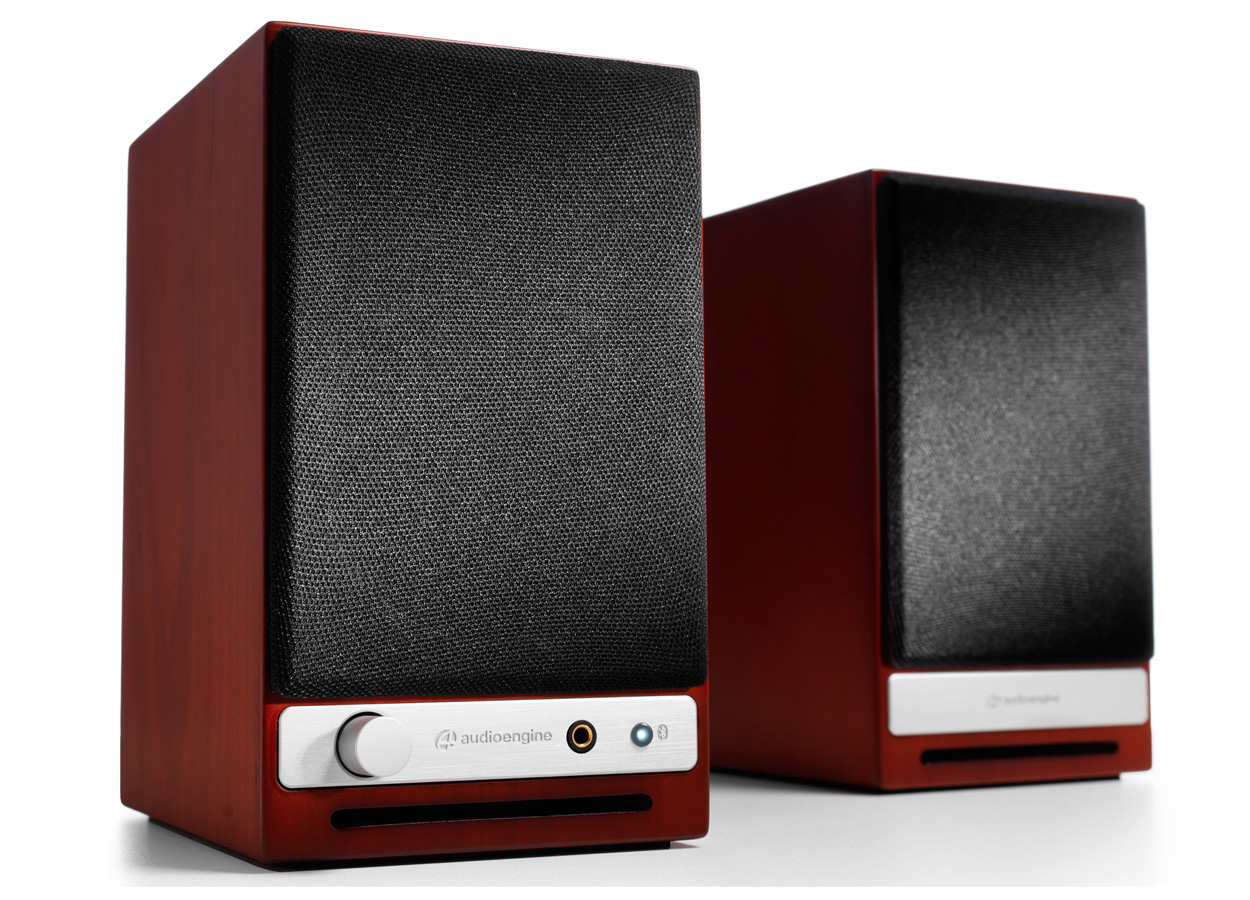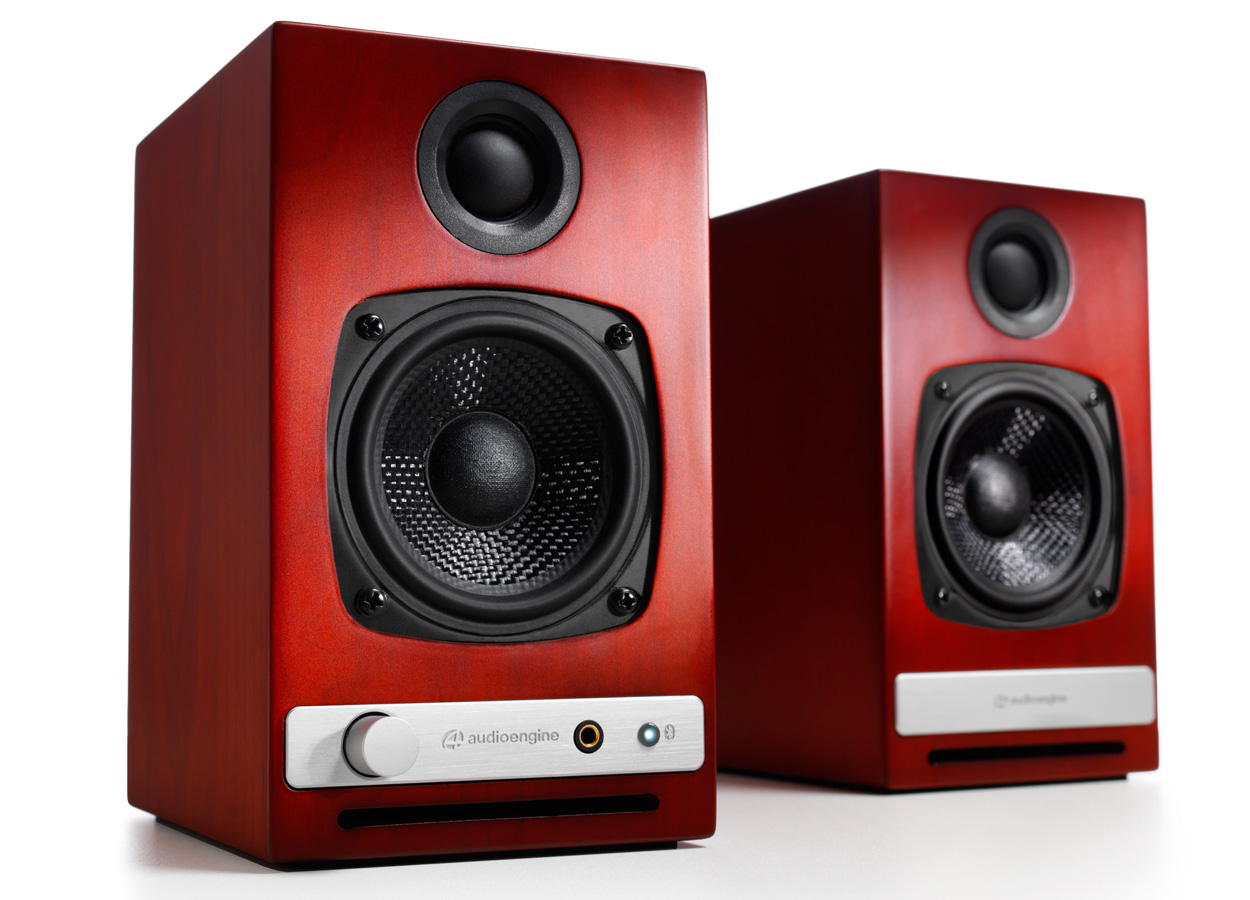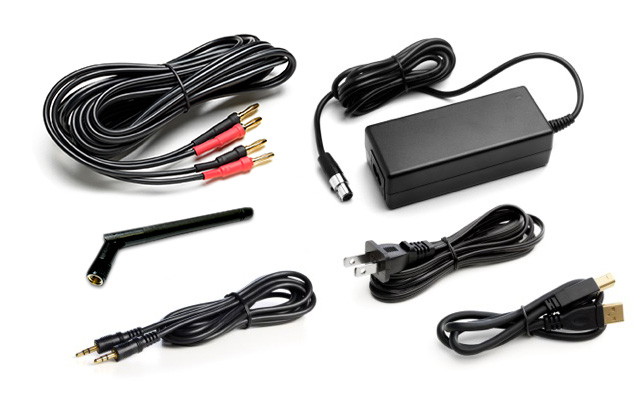In June, I reviewed the surprising Audioengine HD6 powered speakers. Playing a Bluetooth device through the HD6 speaker is the best sound I know of for the money. No, it isn’t quite truly high-end, but it sure is satisfying for a price most people can afford. I’ve personally owned a pair of Audioengine A2 powered speakers since 2008. They’ve traveled with me on vacation and played music from my iMac, and I’ve always loved them.
The guys at Audioengine told me, “Our goals for the HD3s were to use HD Series design cues, add wireless, and tune the sound to be pretty much the same as A2+ but to take it up a notch. The bass-cut switch is also a useful feature, and not only for subwoofers but people using the speakers on a more reactive (or more resonant/less dense) desktop or similar surface.” So it was with real anticipation that I unboxed the new, similar-size Audioengine HD3.
As I said, I liked the HD6s when I reviewed them, and in many ways, the HD3s are a desktop version of the HD6s. They have the same beautiful looks, the same versatile inputs and good sound for the money. They also have a very good headphone amp that can be used by just plugging your headphones into the front of the left speaker. One nice addition to the HD3s is the switch on the back to reduce the bass — a real blessing if you are positioning the speakers close to the wall. While the HD3s can be put on stands and used as speakers for a small audio system or in a video system, they really come into their own as desktop or bookshelf speakers.
Description
The HD3s are available in matte black or furniture-grade cherry or walnut wood veneer. Like the HD6 speakers, they have aluminum trim. Each HD3 speaker measures 7 by 4.3 by 5.5 inches (HWS). This size makes them small enough to be used as desktop computer speakers or to pack in a small bag and carry with you on trips. The drivers are a 0.75-inch Silk Dome tweeter and a 2.75-inch Kevlar woofer. The removable grilles snap on magnetically.
As for ease of use, the Audioengine HD3 has most any connectivity option you could want. The power/volume knob is on the bottom left-hand corner of the left speaker. On the right side of this speaker are a headphone jack and a button for Bluetooth pairing. The HD3 can remember up to six devices, though it can only pair with one at a time. The amps are also in the left speaker, and all of the inputs and outputs are located on the back of this speaker. The connections include an antenna for Bluetooth reception and a binding post output for connecting the two speakers using a cable that is included. There are also RCA stereo inputs and outputs, a 3.5mm audio input for mobile devices, and a micro USB input for connecting to a computer — a way to bypass the digital-to-analog converter on your computer’s output and let the HD3 handle things. The HD3 upsamples to 24-bit PCM with its DAC.
The back panel also includes the connection for the AC adapter and the bass reduction switch that I mentioned earlier. Audioengine included the bass reduction switch for a couple of reasons. If the speakers are to be used with a subwoofer, the bass switch helps to ensure that the speakers aren’t doubling up on the same low frequencies. The second reason for the switch is to control resonance and extra bass vibrations that can occur when the speakers are placed too close to the rear wall or in a corner, a problem I had when I traveled with the A2. I have found that the bass reduction switch works great to prevent things from getting too boomy when the position of the speakers is less than optimal.
With any of these connections, the sound quality of the HD3s was very good, though the range for the Bluetooth option didn’t sound as full as the range for other options. Still, the Bluetooth option does give you the ability to quickly hook up a smartphone or tablet and stream music wirelessly if you are in a hurry. The built in DAC sounds much better than plugging into the 3.5mm plug from laptops and desktop systems.
Listening
If you are familiar with the sound of Audioengine products, the Audioengine HD3 is cut from the same bolt of natural-sounding cloth. For those who haven’t listened to a pair of Audioengine speakers, check out my reviews of the Audioengine A2s and the HD6s. The HD3s are a significant step up in refinement, power and dynamics from the A2s. They give you much of what you get from the HD6s, but in a smaller presentation and with a low-end that goes lower than you would expect from a speaker of its size. The quality of the bass is also better than most tiny speakers. It’s quick and tuneful and not at all boomy, unless you have to place it right up against the wall, which is where the bass reduction switch comes in very handy.
One of the breakthroughs of the A2s was how little they compressed the dynamics of the music for such small speakers. With the HD3s you get really quick micro-dynamics and better-than-expected overall dynamics. The HD3s weren’t as satisfying in my home video system as the HD6s, but with a sub, they did a very nice job.
Where the HD3s are exceptional is as desktop speakers. I listened to them in my office, which is about 110 square feet. This setup has a Samsung 38-inch monitor, so I set them on the far sides of the desk and brought them out about ten inches from the wall. In this system, they sounded great on music and movies and did a good job playing complicated passages with lots of instruments or voices. While they don’t go much below 60 hertz, the bass has nice punch and tunefulness. I never thought that I needed a subwoofer in my office system. They also sounded quite nice when I had to get up and walk around the office or wander into the next room.
The Audioengine HD3s played voices naturally with a better sense of air around them than I had expected from a speaker sitting on a desk. The balance of the midrange and lower midrange on the HD3s was natural and warm but without any thickness or looseness. They never sounded bright or overly detailed and provided a very satisfying sound for both music and videos.
I have been amazed that the little A2s could handle everything from orchestras to rock at pretty loud volumes without falling apart. This is even more true with the HD3s; it doesn’t matter if you’re talking about a tympani passage from an orchestra, the upright bass in a jazz trio, or a singer really belting it out, the HD3s handled it in a way that let me enjoy the musical experience. Of course, they don’t go that deep. I mean, don’t forget that they output a mere 30Wpc peak and have only 2.75-inch midrange/woofer drivers. I’m saying this, I guess, because when listening I often did forget.
Conclusion
So now Audioengine gives you a real choice when it comes to powered desktop speakers. If you only want to spend $249, they still sell the A2 Powered Speakers. If you want a little better sounding speaker with better looks, a headphone amp with volume control, and every feature I could want, then there is the HD3. They are the best desktop speakers I have ever heard.
Copy editor: Dan Rubin
- (Page 1 of 1)





Thanks for sharing your thoughts about Audioengine B2 Powered Bluetooth Speakers.
Regards